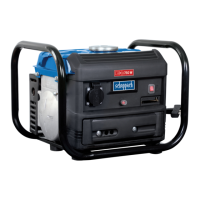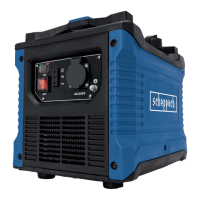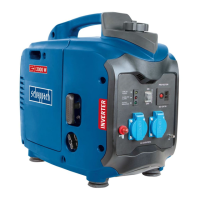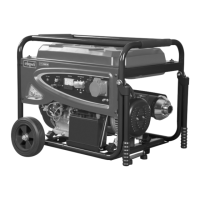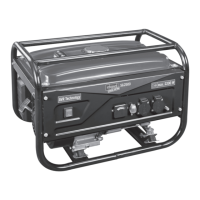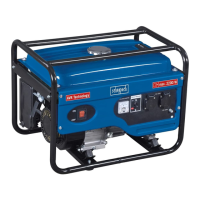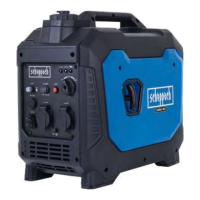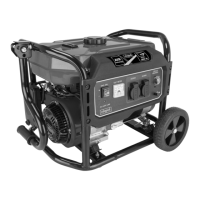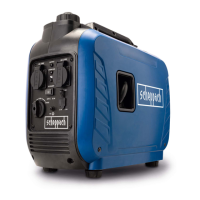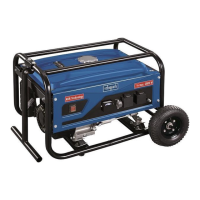rell with new oil
• Remove the spark plug
• Remove the spark plug. Fill about 20 ml of oil
into the cylinder using an oil can. Slowly pull the
express start so that the oil protects the cylinder
from the inside. Screw the spark plug back in
• Store the device in a well ventilated place or
area.
10. Transport
Preparation for transporting
• Empty the petrol tank with a petrol suction pump
or alternatively using the petrol tap and a suit-
able canister.
• Once it it ready for use, leave the engine run-
ning until the rest of the petrol has been used
up.
• Empty the engine oil from the engine (as de-
scribed).
• Remove the spark plug connector from the
spark plug.
• Secure the device with a tension belt to prevent
it slipping out of place.
11. Ordering spare parts
When ordering replacement parts you should give
the following information:
• Type of device
• Device article number
12. Recycling
The packaging is
made of environmentally friendly materials. It can
be disposed of at your local recycling centre. Do
not dispose of electric equipment in the household
waste! According to European Directive 2012 / 19 /
EU, used electrical devices must be collected and
recycled in an environmentally friendly manner.
Contact your local refuse disposal authority for more
details of how to dispose of your worn-out devices.
Environmental protection
Dispose of soiled maintenance material and oper-
ating materials at the appropriate collection point.
Dispose of the waste oil properly.
Spark plug (Fig. 6)
Check the spark plug (16) after the rst 20 hours of
use for dirt and if necessary clean it with a copper
wire brush. Then service the spark plug after every
50 hours of use.
• Remove the spark plug connector (15) with a
turning movement.
• Remove the spark plug (16) with the spark plug
socket 25 included.
• Put it back together in the opposite order.
Note: alternative spark plugs to
NGK CR7HSA
Petrol lter (Fig. 7)
Note: The petrol lter (18) is a lter bowl located
directly under the petrol cap (2) , ltering any petrol
added.
• Turn the on /o ff switch (6) to the “OFF“ position.
• Open the petrol cap
• Remove the petrol lter 5 and clean in a non-
ammable solvent or solvent with a high tlash
• point.
• Reinsert petrol lter
• Close the petrol cap
Changing the oil, (Fig. 5)
Changing the oil should take place when the engine
is warm.
WARNING! Drain fuel before replacing the oil.
Only use engine oil (15 W-40).
• Place the generator on its front side on a suit-
able surface.
• Open the oil ller cap (13) and drain the warm
engine oil into a container by tilting the genera-
tor.
• Pour in engine oil (approx. 0.25 litres).
• Stand the generator upright again.
Low oil switch off
The low oil switch-off responds, if there is not
enough engine oil. The oil check bulb (5) starts to
ash when there is insufcient oil in the motor. The
check bulb begins to ash when the oil amount has
gone below the safe level. The engine will turn off
independently after a short time. Restart is possible
only after pouring in more engine oil (see Chapter
“Replacing the oil”).
9. Storage
Preparation for storage
• Empty the petrol tank with a petrol suction
pump.
Warning notice: Do not remove fuel in closed
rooms, close to re or whilst smoking. Vapours
can cause explosions or res.
• Start the engine and leave it running until the
rest of the petrol has been used up.
• Change the oil after each season. To do this,
remove the old oil from the warm engine and
18/36
